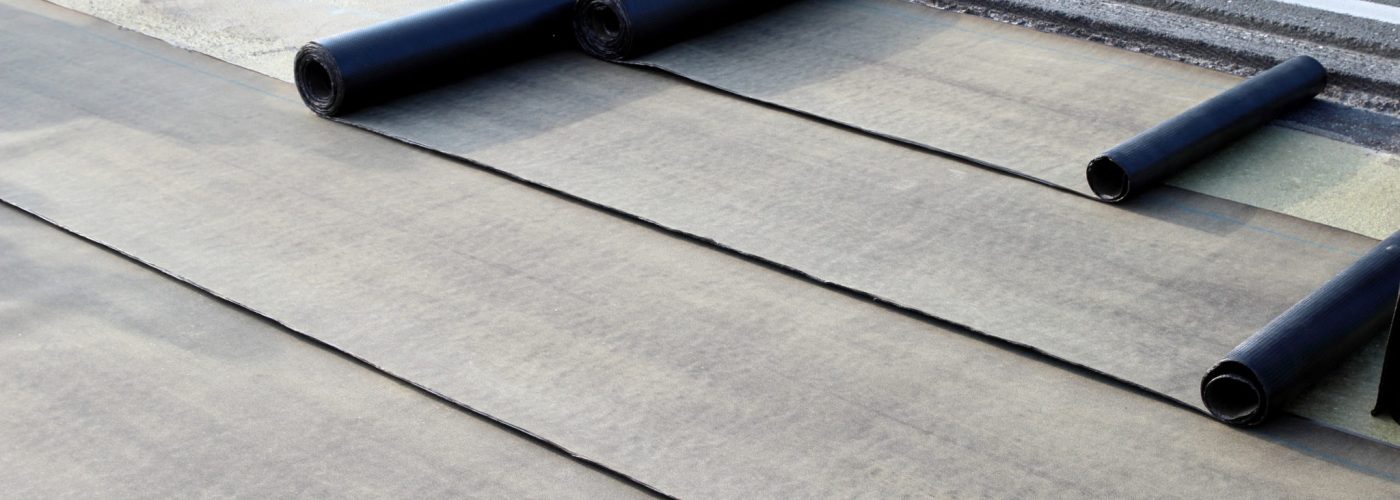Commercial and industrial buildings are often designed with flat roofs. One of the reasons for this is its easy access and replacement. When it’s time to replace your roof, you will be faced with the dilemma of choosing the best and most affordable roofing materials and systems. There will be lots of considerations and roofing systems to choose. A wise way to resolve your roofing issue without going overboard on your construction budget is understanding the benefits and strengths of each roofing material and coating options.
To ensure you get the best results, explore all possible roofing systems, the available materials and coating products. For a start, here are some considerations:
Modified Bitumen Roofing
Modified bitumen roofing is a single-ply roof system that is simply rolled on top of the roof surface. This is different from the conventional laying and heating of the roof with a blow torch. Installation of modified bitumen is no longer dangerous as it used to be. The new roofing system is simply done by peeling off the protective layer and sticking the material to the flat surface. This is even tagged as environment-friendly material as it cuts energy costs. The sun reflects on it so solar energy is contributing to the light inside the building.
This is, so far, the most preferred roofing installation option. This is called by roofing construction experts roofing asphalt. It contains polyester and fiberglass. Mixing them with asphalt guarantees you good quality and strength to your roofing system. All the materials are held together in sheets with refined crude oil. The finished product is normally 39 inches long mod bit sheets.
Built-Up Roofing
The main material used for this type of roofing is gravel. This is pleasing to the eye though. The price for this type of roofing system is a bit lower compared to the other roofing installation works. The top layer of your roof will be heavy as it would carry the whole weight of the gravel. For this reason, joists will be required. It must be installed alongside the existing roof as a reinforced foundation. Otherwise, the roofing might collapse and can cause more damage.
Building contractors are not fond of this as this would require more manpower. While you save from the cost of the materials, you will be paying more for labor. This flat roof option is best for structures that do not have occupants yet. That means closing the building temporarily while the installation is going on. Plus, it requires a healing or drying period. Business owners look at it as business downtime. They would rather look for another option. Something that would not hamper the business. A choice that can keep going even when flat roof repair or installation is going on.
Ethylene and Propylene Diene Monomer (EPDM) Roofing
Rubber roofing is the other term for EPDM Roofing. This type of roofing system is lighter compared to the other flat roof replacement systems. When you choose this type of roofing work, you need not install roof deck reinforcements. The byproduct of ethylene and propylene mixed with natural gas is a single-ply rubber sheet which when installed are tucked with adhesive by the seams. As time passes by, seams would require maintenance as this is where the leaks start to develop. Thus, this is not the most preferred option among roofing contractors.
EPDM Manufacturers are in the works to develop a leak-free sealing system along with the sheets to avoid cumulation of running water on the sides. EPDM roofing comes in 4 layers – Elastomeric Base, AFR Fire Retardant, Polyester Reinforced Fiber, and EPDM Top Layer, which is sometimes optional. Due to the tough layering, this type of roofing can withstand strong winds and heavy rains. The material may be cost-effective. The long-term roofing goal is something that holds up building owners in choosing this.
Poly Vinyl Chloride (PVC) Roofing
Insulation boards are installed over roof decks’ membranes. This is the typical installation of a PVC roofing system. Flat roofs are not supposed to be complicated. If it can overcome rooftop hazards, that will be good to go. The cons of PVC materials primarily include the cost. This requires the initial roof removed and that would mean additional cost to the building owner. This option is perfect for structures that must be highly resistant to fire, grease, and other harmful chemicals.
PVC is favored over EPDM among contractors. It has a life expectancy of around 20 to 30 years. Clients can pick from varied thickness options for much better quality. The thicker the PVC boards, the more likely they can withstand stronger roof dangers. The seams of PVC roofs are welded so it is great in keeping the water out. No leaks for years. That is when seams are properly welded. Professional repairmen are the best go-to installers to ensure quality work and fewer chances of poor installation.





